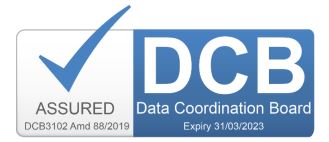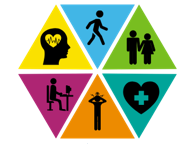
Cancer Quality of Life Survey
Information for Healthcare Staff
The Cancer Quality of Life Survey is being run by NHS England. A survey provider (Quality Health) is supporting the process by operating the survey invite and response system on behalf of NHS England. All the survey responses are being held by the National Disease Registration Service (NDRS) and linked with information related to each person’s diagnosis and treatment.
NHS England is the data controller for the data collected through the survey. The survey provider, (Quality Health Limited) has been instructed as a data processor to assist NHS England operate the survey.
Under the National Disease Registries Directions 2021 (Directions), NHS England is instructed to collect and use confidential patient information to operate the NDRS. The Directions are legal instructions from the Secretary of State for Health and Social Care, under section 254 of the Health and Social Care Act 2012. In order to collect and process personal data, NHS England relies on the following legal basis, under the UK General Data Protection Regulation:
- Article 6(1)(c) – legal obligation – as it is required to operate the National Disease Registration Services under the National Disease Registries Directions 2021.
- Article 9(2)(g) – substantial public interest – because the processing of the data is substantially in the public interest and in accordance with the law, for the purposes of NHS England exercising its statutory functions under the National Disease Registries Directions 2021. It is substantially in the public interest to improve NHS cancer treatment and care, improve patient outcomes and to understand how these are affected by gender, ethnicity, disease type and geographic region. This is also permitted under paragraph 6 of Schedule 1 of the Data Protection Act 2018 (DPA).
More information can be found in:
- The NDRS privacy notice, available here: https://digital.nhs.uk/ndrs/patients/your-rights-and-privacy
- The NDRS Transparency Notice, available here: NDRS transparency notice - NDRS (digital.nhs.uk)
Figure 1 - Data boundaries

No – local Trusts are not categorised as either data controllers or data processors in relation to this Survey and therefore do not need to carry out any additional information governance checks.
Further information about the Information Governance set up for the survey can be found under the question: “What is the information governance set up for this survey?”
Yes – Quality Health carries out a check with the Demographics Batch Service (DBS) in the 24 hours before invitations are sent out to patients. This check is carried out before i) patients receive their initial invitation to complete the survey and ii) before a reminder letter is sent out. The DBS check uses information in the NHS Spine to check if a patient has died between the point that they were identified as eligible for the Survey and when the Survey invite is sent out.
If you are contacted by a relative of a deceased patient who has been sent the Survey in error, please contact Quality Health:
Freephone helpline on 0800 917 1163 (9am to 5pm Monday to Friday)
Email to helpline@quality-health.co.uk
Quality Health will be able to promptly remove this patient from their systems and ensure that no further information about the Survey is sent to that address.
Please note: The Demographics Batch Service (DBS) has replaced the National Strategic Tracing Service (NSTS). Further information can be found here: https://digital.nhs.uk/services/national-back-office-for-the-personal-demographics-service/demographics-batch-service-bureau
You can send the survey onto our survey provider, Quality Health by using the following address: FREEPOST Quality Health (no stamp is needed).
If you have any questions, you can call Quality Health, on 0800 917 1163 or send them an email at helpline@quality-health.co.uk and they will tell you how to return the survey.
Please also check whether your patient has brought you their survey responses because they want to raise a concern with you about symptoms or their wellbeing. If they are, please act to identify the issues.
People who complete the survey are able to see a summary of their answers, with a comparison to the general population. People completing online have the option to download or print their summary. People completing the survey on paper can request a PDF of their summary by email or request a paper copy.
If a patient wants to discuss their survey results with you, you should:
- Review the information about your patient shown in the summary graphs.
- Are there any areas where your patient looks like they may be struggling? Is there anything that you or your team could do to help?
- Consider having a supportive conversation with your patient.
- If the patient has a care plan, or if you have received an End of Treatment Summary from their hospital team, you could use these to inform your discussion.
- Where appropriate, you should signpost or refer patients to health and wellbeing information and support that can address their needs.
- Good personalised care is delivered by a multidisciplinary team. You should consider how other roles could support patients. For example, if a social prescribing link worker could connect patients to community groups and other services for practical and emotional support.
You can find more resources to help you to support patients with their quality of life under Links and further reading.
Figure 2 - Survey complaints procedure

If your patient wishes to make a complaint about the Survey, they can follow the process outlined above.
If your patient wishes to complain about an NHS service, you should follow your own organisation’s complaints procedure. You can also direct them to the local Patient Advice and Liaison Service (PALS) for more information about the NHS complaints procedure.
There are a range of LWBC interventions that aim to improve quality of life and patients’ experience of care. The Cancer Quality of Life Survey is one of those interventions; it will both empower patients and provide data that can drive service improvement.
The aim is to collect information that can be used to produce national summary statistics (‘metrics’) that highlight any differences in QoL outcomes between different groups e.g. by cancer or treatment type. Wherever possible, this information will be ‘case-mix’ adjusted to support regional and local reporting. This information can be used to inform the direction of our work aimed at supporting people living with and beyond cancer.
From August 2021, every patient completing the survey will have access to their own summary of the survey results with a comparison to the general population. The reports are easily-interpreted infographics containing each person’s summary quality of life scores. The summaries can be used as a prompt to inform personalised care planning and conversations. The information provided in the summary reports will be at a high level and may not cover all areas of concern that are directly affecting your patients. Other tools such as a holistic needs assessment, cancer care review, trigger questions or cancer-site specific PROMS could all be used to facilitate a more in depth conversation about your patient’s needs, and what matters most to them.
Figure 3 - Timeline for questionnaires and reviews for cancer patients

The questions look at quality of life outcomes and do not look at the experience of receiving cancer care. We want to understand about the longer-term effects that cancer may have on people. This will help us to improve the way we support people to live as long and as well as possible.
The Cancer Quality of Life Survey aims to collect information that can be used to produce national summary statistics (‘metrics’) that will highlight any differences in quality-of-life outcomes between different groups e.g. by cancer or treatment type. Wherever possible, this information will be ‘case-mix’ adjusted to support regional and local reporting. This information can then be used to inform the direction of work to support people living with and beyond cancer.
Patients may receive more than one of the questionnaires below in Figure 3. Please encourage patients to complete all of them, as their answers will be useful in different ways to themselves, to other patients and to the NHS.
Figure 4 - Differences between questionnaires that cancer patients may receive in England

We want to compare between groups rather than track individuals over time. This is a rolling survey of all patients as they become eligible. We will be able to see if quality of life improves for different groups over time. We haven't ruled out a repeated measurement in the future but are confident that the single assessment point is enough for the national and regional level monitoring that we are proposing at this time.
The survey has been sent out since September 2020, initially to a sample of people who had a breast, prostate or colorectal cancer diagnosis. Since December 2020 it has been sent to all people who have had a breast, prostate or colorectal cancer diagnosis. From July 2021, it was also sent to a sample of people who have had other included cancers and since October 2021 it is being sent to all people who had any of the included cancers. People are invited to complete the survey approximately 18 months after diagnosis.
Some cancers are excluded. For example, we do not send the survey to patients with appendix cancer, microinvasive breast cancer, and those with cancers arising in polyps. This is because these patients may not be aware that they have a diagnosis of cancer and receiving the survey could cause confusion or distress.
Please visit the Cancer Alliance Workspace: https://future.nhs.uk/canc/view?objectID=19564592
You will find a communications toolkit including a range of useful products to support this. You can also enter online ‘chat’ discussions with other people to share information and activity.

